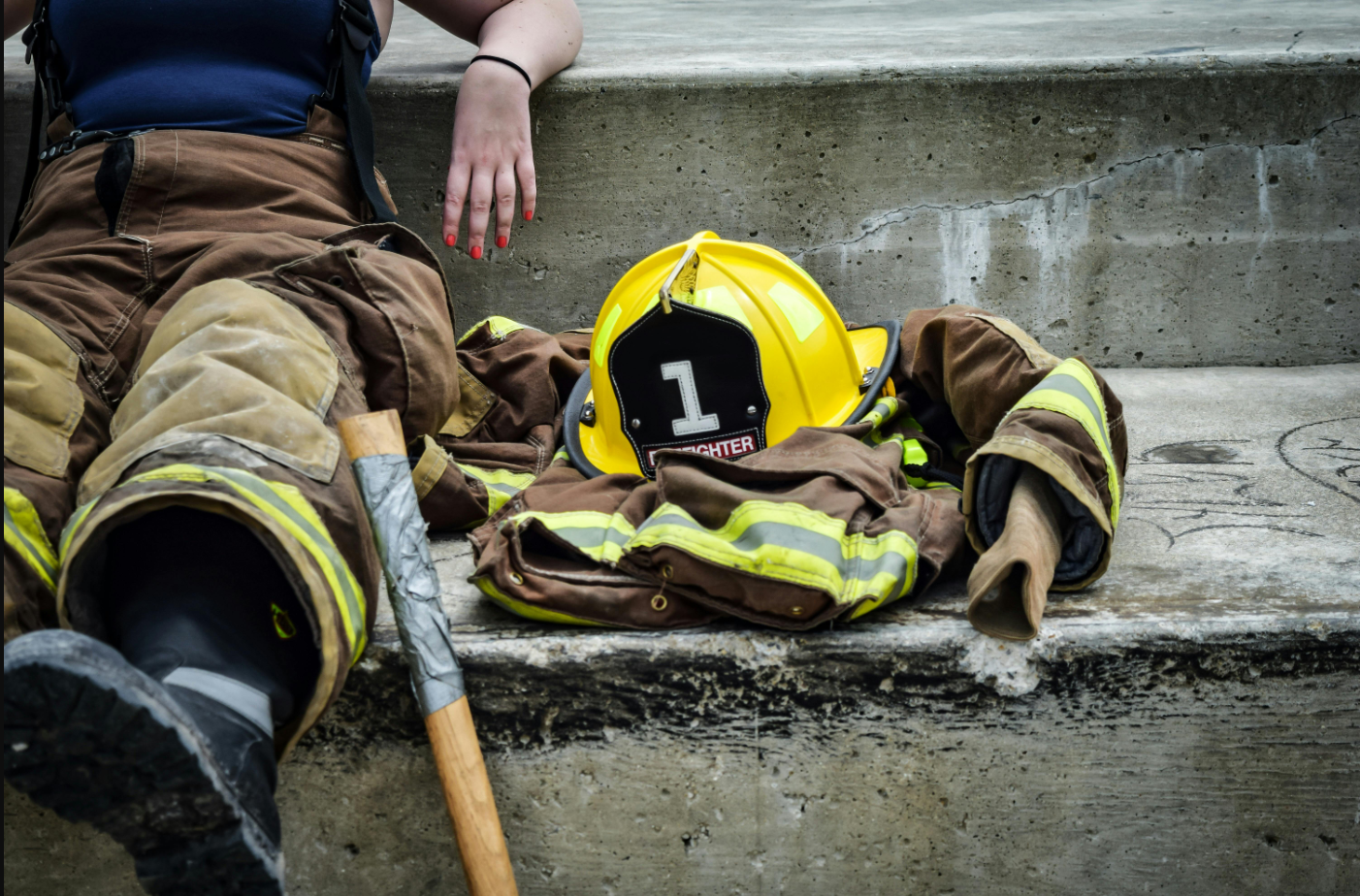
Firefighters are esteemed for their bravery and courage as they courageously confront flames to safeguard lives and property. Yet, behind every dramatic rescue, there’s an often underestimated truth: the many hazards these brave firefighters face daily.
In 2022 alone, according to Statista, 96 firefighters tragically lost their lives in the line of duty within the United States. It marked a rise from 70 fatalities the previous year. The specter of 9/11 serves as a stark reminder, with the highest number of on-duty firefighter deaths ever recorded at 443 that year.
In this article, we’ll shed light on the multifaceted risks firefighters encounter. We’ll explore the complexities of their profession, going beyond the image of heroism to understand the unseen challenges that threaten their health and well-being.
Table of Contents
- 1 Physical Strain and Injuries on the Fireground
- 2 Respiratory Challenges
- 3 Psychological Impact of Emergency Situations
- 4 Chemical Exposures in Building Fires
- 5 The AFFF Controversy: A Mix of Safety and Legal Concerns
- 6 Radiation Risks in Modern Fires
- 7 Heat Stress and Dehydration
- 8 Frequently Asked Questions
- 9 Beyond the Flames: The Unseen Dangers Firefighters Face
Physical Strain and Injuries on the Fireground
Firefighters are warriors who battle blazes with immense physical demands. They lug heavy equipment, navigate through precarious landscapes, and rescue people in duress, all factors that increase their risk of musculoskeletal injuries.
The NFPA reports a sobering statistic: strains, sprains, and back problems account for 36% of all firefighter injuries. Repetitive tasks and the pressure to react swiftly contribute to this long-term physical toll. In 2022, around 21,325 injuries, constituting approximately 33 percent of all reported firefighter injuries, occurred on the fireground.
While fire departments prioritize fitness programs and proper lifting techniques, the threat of physical injuries remains a constant challenge in this demanding profession.
Respiratory Challenges
Firefighters don’t just battle flames; they fight an unseen enemy – the hazardous environment. Smoke, toxic fumes, and microscopic particles fill the air they breathe, posing a significant threat to their respiratory health.
HAL Open Science highlights the dangers of inhaling these contaminants. Carbon monoxide, benzene, and other toxins can lead to chronic conditions like asthma and COPD (Chronic Obstructive Pulmonary Disease).
Firefighters rely on a crucial piece of equipment to safeguard them: the Self-Contained Breathing Apparatus (SCBA). This lifeline provides clean air, allowing them to breathe safely and focus on the task. However, the constant risk of respiratory challenges remains a harsh reality in firefighting.
Psychological Impact of Emergency Situations
Physical scars don’t just mark Firefighters; they carry the weight of their experiences on their minds. The inherent nature of their duties exposes firefighters to traumatic events, loss, and profound human suffering.
These experiences can lead to mental health issues like PTSD, anxiety, and depression, posing significant threats to their well-being. Studies conducted by the National Institutes of Health (NIH) depict a troubling scenario. The occurrence rate of PTSD among firefighters in the United States ranges from 8% to a staggering 22%.
Thankfully, the importance of mental health is gaining recognition. Peer support programs and readily available mental health resources are becoming increasingly crucial for firefighters. Access to counseling services is also essential as they navigate the emotional challenges of emergency response. By prioritizing mental well-being, we ensure these brave individuals are equipped to fight fires and heal from the invisible battles they face.
Chemical Exposures in Building Fires
Structural fires are more than just infernos—they’re cauldrons of toxic chemicals. When buildings burn, carcinogens and other harmful substances are released, putting firefighters directly in harm’s way. These toxins can be absorbed through skin contact or inhaled during firefighting efforts.
The long-term health risks are especially concerning, with a potential increase in cancer diagnoses among firefighters. This grim reality underscores the importance of robust protective measures. Implementing initiatives centered on advanced PPE, thorough decontamination protocols, and awareness campaigns is vital to minimize the health risks linked to chemical exposures.
The AFFF Controversy: A Mix of Safety and Legal Concerns
The use of Aqueous Film-Forming Foam (AFFF) in combating flammable liquid fires has raised concerns due to its key components, per- and polyfluoroalkyl substances (PFAS). Firefighters who regularly utilize AFFF may face potential health risks from exposure to these chemicals.
At the heart of the controversy lies the question of responsibility. As reported by TorHoerman Law, ongoing AFFF lawsuits highlight actions against foam manufacturers. These legal actions focus on whether manufacturers properly communicated the potential health hazards linked to AFFF usage to firefighters.
Additionally, organizations like the NFPA are being questioned regarding their responsibility in setting testing criteria for firefighting foams. The AFFF controversy underscores the complex interplay between firefighting practices, chemical exposure, and firefighter safety.
In a recent development, 3M, a major manufacturer of AFFF, proposed a tentative $10 billion settlement to address litigation from multiple U.S. cities and towns. This sizable settlement suggests an acknowledgment of 3M regarding the potential health risks AFFF poses. This recent AFFF lawsuit update underscores the recognition of potential health risks associated with PFAS in firefighting foam. It also highlights the significant financial impact of the controversy.
While these settlements signify a step towards acknowledging manufacturers’ responsibility, the legal landscape surrounding AFFF remains unsettled. The ongoing AFFF lawsuit updates highlight the controversy’s significant impact, with both financial compensation and broader safety implications for firefighters at stake.
Radiation Risks in Modern Fires
Our ever-evolving urban landscapes introduce a new layer of complexity to firefighting – radiation risks. Modern buildings and materials may contain elements that release hazardous radiation when engulfed in flames. It raises concerns for firefighters who respond to these types of incidents.
The key to minimizing these risks lies in preparation. Proper training equips firefighters with the knowledge and skills to identify potential radiation hazards. Specialized tools such as radiation detectors and protective attire offer an extra level of protection. Yet, the strict adherence to established safety procedures might be the most vital component. Following these protocols ensures the safety not only of the firefighters themselves but also of the surrounding community.
Heat Stress and Dehydration
Firefighters face not just flames but also the relentless heat they generate. These intense environments put responders at risk of heat stress and dehydration. Unfortunately, the heavy protective gear they wear, essential for safety, traps heat, making it difficult for the body to cool down.
To combat this threat, fire departments prioritize several crucial measures. Proper hydration strategies are key, ensuring firefighters stay replenished throughout a blaze. Additionally, rotating personnel prevents prolonged exposure to extreme temperatures, allowing them to recover in cooler areas. On-site cooling measures, like misting tents or cooling vests, can also provide much-needed relief.
But prevention is equally important. Fire departments train their personnel to recognize the early signs of heat stress, such as dizziness or nausea.
Frequently Asked Questions
What’s the controversy surrounding AFFF firefighting foam?
AFFF effectively extinguishes flammable liquid fires but contains per- and polyfluoroalkyl substances (PFAS) that may pose health risks. Lawsuits are ongoing regarding the manufacturer’s responsibility for informing firefighters of these risks.
How do fires impact firefighters’ mental health?
Exposure to traumatic events, death, and human suffering can lead to PTSD, anxiety, and depression. Fire departments are increasingly prioritizing mental health resources and peer support programs.
What can be done to improve firefighter safety?
Continued research on new protective equipment and decontamination methods is essential. Improved training on recognizing and managing health risks and ongoing support for firefighter mental health are also crucial aspects of ensuring their well-being.
Beyond the Flames: The Unseen Dangers Firefighters Face
Firefighters are lauded for their bravery, but their battles extend far beyond the flames. They face many hidden hazards, from physical strain and chemical exposure to the psychological toll of witnessing tragedy. These diverse risks highlight the urgent need for comprehensive safety measures.
The AFFF controversy, with its substantial settlements, exemplifies the evolving landscape of firefighter safety. It’s a stark reminder that ongoing research and a holistic approach are crucial. By acknowledging these courageous individuals’ intricate challenges, we can ensure their well-being through unwavering commitment to robust protective measures. They deserve nothing less.


